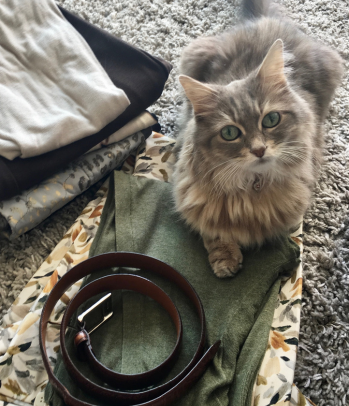Chronic Kidney Disease in Cats: Treatment options, improving quality of life, and making end of life decisions for hospice and euthanasia
Chronic kidney disease (CKD) is one of the most common and serious illnesses affecting senior cats. While CKD is progressive and ultimately incurable, proper management can significantly improve a cat’s quality of life and extend their lifespan. Understanding treatment options and knowing when to make difficult end-of-life decisions are essential for any cat owner facing this diagnosis.
Every case is unique. If you aren’t sure what to do, schedule a teleconsult with one of our compassionate doctors:
Overview of Chronic Kidney Disease in Cats
Chronic kidney disease (sometimes called kidney failure as it becomes more advanced) in cats typically develops over time typically due to aging, genetic predisposition, or other health issues such as hyperthyroidism or high blood pressure. Chronic kidney disease is more common in older cats but we can sometimes see it in younger cats.
Early symptoms of CKD can be subtle, including increased thirst, more frequent urination, weight loss, and decreased appetite. As the disease progresses, symptoms worsen and may include vomiting, bad breath, dehydration, muscle wasting, and lethargy. Routine veterinary check-ups and bloodwork can help catch CKD in its earlier stages, allowing for earlier intervention and improved outcomes.
Treatments for Chronic Kidney Disease in Cats
Unfortunately, we cannot reverse chronic kidney disease. It is progressive and ultimately terminal in all cases. There are often things you can do to keep your kitty comfortable for a while. Each approach has its benefits and drawbacks, discussed below.
1. Dietary Management
The first thing your vet will probably tell you is to put your cat on a prescription kidney diet. They are lower in protein, phosphorus and sodium while high in omega 3s to help kitties feel better and keep on weight.
Pros: They can make cats feel better and sometimes even slow the progression of kidney disease.
Cons: However, many cats refuse to eat these diets. There are some newer “fresh” pet food companies that make fresh or custom kidney diets you can try that your cat may enjoy more. If your cat refuses to eat a special kidney diet, it’s more important that they at least eat SOMETHING (even if it’s not a special diet) so they can keep on weight and feel strong. If your cat won’t eat the kidney diet, talk to your veterinarian about alternatives.
2. Fluid Therapy
As kidney function declines, dehydration becomes a major concern. Subcutaneous (sub-Q) fluids can be administered at home to help maintain hydration and flush toxins from the bloodstream.
Pros: It can help dehydration, improve energy levels, and help cats maintain a good quality of life for longer. It can often be started at once a week or so and increased up to daily as needed.
Cons: Some cats really hate it. If you have the sort of cat that hides from you all the time because it’s scared you might give it fluids, they may not be the best candidate for fluids.
3. Medications and Supplements
Several medications can help cats with kidney disease feel better, leading to a better quality of life for longer. There are several categories of medications and which medications to use depends on your cat’s symptoms.
-
Appetite stimulants: for example, mirtazapine or capromorelin. These can improve your cat’s appetite to help eat better, keep weight on, and have more energy. Mirataz (topical mirtazapine) can even be rubbed on the ear to avoid you having to give your cat a pill.
-
Nausea medications: Nausea medications not only can prevent vomiting but can sometimes improve appetite as well. The most common nausea medication we prescribe is maropitant (brand name: Cerenia). It is administered once daily.
-
Phosphate binders: If your cat’s phosphorus is high, your vet may prescribe a phosphate binder. High phosphorus can make cats feel ill. These are often powders mixed with food that cats eat pretty readily. Brand names include Epakitin and Rx Vitamins Phos-Bind.
-
Potassium: Cats with kidney disease can sometimes get low potassium, causing them to feel weak, tired, and sluggish. There are numerous oral potassium supplements in liquid and powder form such as Renal K.
-
Erythropoetin/darbepoetin: Cats with kidney disease can become anemic, leading to lethargy and weakness. Synthetic erythropoietin (typically darbepoetin) can be injected periodically to improve red blood cell production.
-
Pros: It can help improve your cats energy levels and overall well-being
-
Cons: It can require frequent vet visits and can be costly.
-
5. Dialysis
Dialysis involves taking your pet to the vet 2-3 times a week to remove the toxins from their blood. It’s kind of like running their blood through an artificial kidney. While it may be an option for cats with chronic kidney disease I RARELY recommend it because:
-
You have to bring your cat to the vet 2-3 times a week and keep them there for 4-6 hours. Most cats will hate you for this.
-
It can cost more than $10,000 each week
-
It’s not widely available
6. Kidney transplant:
Of all the options, this is the only option that is a potential cure, because you give them a new working kidney. They take this kidney from a totally healthy cat. I do not recommend it for most cats with CKD. Occasionally, in a young cat with CKD that is otherwise totally healthy and has a long life ahead of it, I might consider it CAUTIOUSLY.
Pros:
-
if it’s successful, your cat now has a functioning kidney and may go on to live at least another 3-5 years (a few have survived 10 years or more)
Cons:
-
The long term success rates (one year or more) is about 50-70%. A LOT of cats die of complications during or following the procedure. Sometimes the body can reject the new kidney.
-
It is very expensive, costing upwards of $20,000-$30,000
-
It requires a donor cat who has to give up their kidney, which a donor cat cannot consent to, leading to some ethical concerns.
How to Know When It’s Time for Euthanasia
Cats with kidney disease often experience a lot of ups and downs in their quality of life as the disease progresses, leading to a bit of an emotional roller coaster. Sometimes there will be a few bad days followed by some great days.
I highly recommend keeping a daily diary of your cats quality of life. It’s very difficult to be objective when we love someone, and a diary helps us to think clearly and look at the data. You don’t have to be too detailed – a frowny face for a bad day and a smiley for a good day is enough. When your cat is having more bad days than good days, and there is not much more to be done, that is the right time to make the decision for euthanasia, in my opinion.
Signs that it might be time to consider euthanasia:
-
Your cat is barely eating (eating less than ⅓ or ¼ of their normal meals) for several days straight, and medications aren’t helping anymore
-
Your cat is getting so skinny they are having trouble walking, jumping, and getting to the litterbox
-
Your cat is vomiting frequently and medications are not helping
-
Your cat is extremely lethargic, not wanting to move around much, or spending most of their time in unusual places/hiding.
-
Your cat is vocalizing often or seems in pain
Chronic kidney disease can be a challenging and confusing disease to manage. If you would like more guidance, schedule a 45 minute teleconsult with one of your compassionate veterinarians who can review your pet’s medical records and history and help you formulate the most compassionate and loving plan for your kitty.

